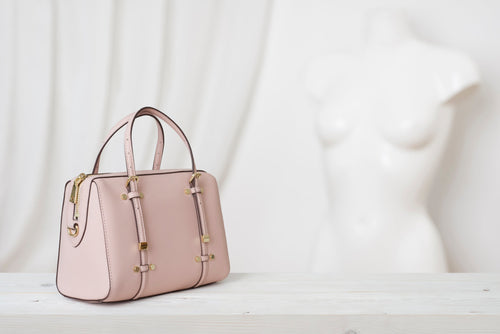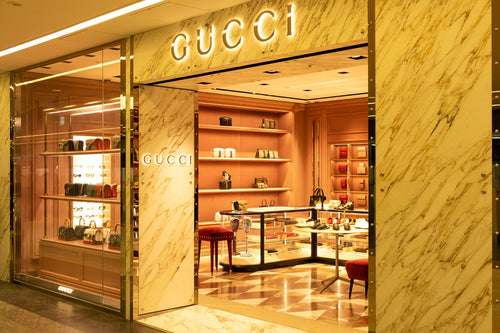Shop designer bags worldwide
Shop designer bags worldwide
All Handbags 2
Is Isabel Marant A Luxury Brand? Your Complete Guide
por Manuel Peters Updated On julio 02, 2025 7 lectura mínima
Isabel Marant occupies a unique position in the luxury fashion landscape, representing what many consider the epitome of effortless Parisian chic. Founded in 1994 by French designer Isabel Marant, the brand has evolved from a small Parisian atelier into a global fashion powerhouse that generates nearly €300 million in annual revenue. This comprehensive guide explores whether Isabel Marant qualifies as a luxury brand, examining its reputation, craftsmanship, pricing, and cultural impact in the fashion world.
Understanding Isabel Marant’s Luxury Status
Positioning in the Luxury Market
Isabel Marant operates in what fashion insiders call the “contemporary luxury” segment, positioning itself between traditional French luxury houses and high-end ready-to-wear brands. The brand embodies a new vision of luxury that rejects ostentation and materialism, instead offering a relaxed and effortless approach to luxury clothing and accessories.
Unlike traditional luxury brands that emphasize exclusivity through obvious branding and formal aesthetics, Isabel Marant focuses on subtle luxury indicators such as exceptional craftsmanship, premium materials, and distinctive design elements that speak to those in the know. This approach has earned the brand recognition as a “taste-making brand famed for its pared-down Parisian aesthetic”.
Quality and Craftsmanship Standards
The luxury credentials of Isabel Marant are firmly established through its commitment to quality and craftsmanship. Isabel Marant has always promoted handmade work and continues to fight for the preservation of textile crafts through every collection. The brand established an endowment fund in 2021 specifically to support traditional textile craftsmanship.
Each piece undergoes rigorous quality control, with Isabel Marant personally trying on every garment before it leaves the studio to ensure it works in the everyday life of a real woman. This hands-on approach to quality assurance reflects the brand’s commitment to luxury standards while maintaining its approachable aesthetic.
What Makes Isabel Marant a Good Brand?
Consistent Design Philosophy
Isabel Marant’s reputation as a good brand stems from its unwavering commitment to a consistent design philosophy. The brand has maintained the same core values for over 25 years, with Isabel Marant stating that “my tastes have never changed, I adapt them to the times”. This consistency has created a loyal customer base that trusts the brand to deliver pieces that align with their lifestyle and aesthetic preferences.
Versatility and Wearability
The brand excels at creating pieces that seamlessly transition from day to night, embodying the French concept of “sprezzatura” – studied carelessness that appears effortless. Isabel Marant clothing is designed to easily combine with other pieces, making them valuable additions to any wardrobe.
Celebrity Endorsement and Cultural Impact
Isabel Marant’s reputation is bolstered by its extensive celebrity following. The brand has been worn by numerous high-profile figures including Kate Moss, Victoria Beckham, Alexa Chung, Sienna Miller, and Rachel Weisz. This celebrity endorsement has significantly contributed to the brand’s cultural cachet and desirability.
Isabel Marant’s Signature Aesthetic and Recognition
Defining the Boho-Chic Movement
Isabel Marant is widely credited as one of the progenitors of modern boho-chic style, transforming humble elements like fringes and lace into icons of coolness. The brand’s aesthetic combines traditional Parisian elegance with bohemian influences and contemporary urban edge.
The designer’s approach to boho-chic differs from mainstream interpretations by incorporating unexpected materials and sophisticated construction techniques. Her collections consistently feature flowy silhouettes, artful layering, delicate embroidery, and a mix of luxurious fabrics with casual materials.
Key Design Elements
Isabel Marant’s signature style is characterized by several distinctive elements:
•Texture mixing: Combining materials like leather, suede, silk, and denim in unexpected ways
•Relaxed silhouettes: Emphasizing comfort without sacrificing style
•Ethnic influences: Drawing inspiration from global cultures while maintaining a Parisian sensibility
•Handcrafted details: Incorporating traditional techniques like embroidery and beadwork
The most famous Isabel Marant Bag
The Oskan Collection
The Oskan bag stands out as Isabel Marant’s most iconic handbag design. This collection includes several variations, including the Oskan Soft, Oskan Hobo Soft, Oskan Moon, and Oskan Crossbody, each capturing the brand’s bohemian-chic aesthetic.
The Oskan bags are crafted from premium materials including calfskin, suede, cowhide, and raffia, featuring subtle feminine details like silver or gold-tone studs and whipstitch or studded trims. Available in earthy colors like chalk, beige, cognac, and natural tones, these bags blend easily into any seasonal outfit.
The Oskan Moon’s Success
The Oskan Moon bag, priced at £695, has emerged as a particularly popular hero style since its debut in December 2022. This rounded crossbody bag perfectly encapsulates the brand’s ability to create pieces that are both functional and fashion-forward, making it a must-have accessory for fashion enthusiasts.
Other Notable Styles
Beyond the Oskan collection, Isabel Marant has created several other notable bag designs:
•Leyden bags: Made from soft materials like lambskin, tweed, and denim with special leather touches
•Naoko crossbody: Part of the brand’s legendary crossbody collection
•Hobo Soft bag: Known for its bohemian allure and signature slouchy silhouette
Current Popularity and Market Position
Recent Market Challenges
Despite its strong brand recognition, Isabel Marant has faced significant market challenges in 2024. The company reported a 31% drop in wholesale and online retailer sales, with overall sales declining by 17% compared to the previous year. This decline has been attributed to weakening demand in key markets including Italy, the UK, and Asia.
Gen Z Renaissance
However, fashion analysts predict a resurgence for Isabel Marant, particularly among Gen Z consumers. The brand is experiencing soaring interest on social media platforms, with over 25,600 tagged TikTok videos generating millions of views. This renewed interest is driven by the boho-chic revival and the brand’s authentic aesthetic that resonates with younger consumers seeking alternatives to fast fashion.
Resale Market Performance
On the resale platform Poshmark, Isabel Marant ranks 153rd among all brands, with an average selling price of $125 and total monthly revenue of $98,248. The brand’s premium positioning is evident in its pricing strategy, which sits significantly above the platform’s median sale price of $24.
The Timeless Appeal of Isabel Marant
Enduring Design Philosophy
Isabel Marant’s timeless appeal lies in its commitment to creating pieces that transcend seasonal trends. The brand focuses on timeless elements with contemporary flare, ensuring that pieces remain relevant year after year. This approach reflects the designer’s belief that “if you truly love something, your love never fades”.
Investment-Worthy Pieces
The brand’s focus on quality materials and construction makes its pieces investment-worthy additions to any wardrobe. Isabel Marant has adopted a more eco-responsible approach by selecting quality materials and limiting excess production, favoring pieces that are designed to last.
Signature Wardrobe Essentials
Isabel Marant’s timeless appeal is embodied in its signature wardrobe essentials, including:
•Oversized coats with distinctive silhouettes
•Floral prints that feel both romantic and modern
•Wide-leg jeans that epitomize relaxed elegance
•Classic sweaters with artisanal details
•Studded bags that add edge to any look
Understanding Isabel Marant’s Pricing Strategy
Premium Positioning Rationale
Isabel Marant’s pricing reflects its positioning in the luxury contemporary market. The brand’s pricing strategy is justified by several factors:
Quality Materials: The use of premium materials like fine leather, silk, and cashmere contributes to higher production costs. Each piece is crafted with attention to detail that reflects luxury standards.
Artisanal Craftsmanship: The brand’s commitment to handmade work and traditional textile crafts adds value to each piece. This artisanal approach requires skilled craftspeople and time-intensive production methods.
Design Innovation: Isabel Marant consistently innovates within its aesthetic framework, creating pieces that feel fresh while maintaining brand consistency.
Market Positioning
The brand occupies a sweet spot in the contemporary luxury market, offering pieces that are more accessible than traditional luxury brands while maintaining aspirational appeal. This positioning allows the brand to attract both former high-street shoppers looking to upgrade and luxury consumers seeking more relaxed alternatives.
Value Proposition
Despite higher price points, Isabel Marant offers value through:
•Longevity: Pieces are designed to last both in terms of quality and style relevance
•Versatility: Items can be styled multiple ways and for various occasions
•Resale value: Strong brand recognition maintains value in the secondary market
Celebrity Endorsement and Cultural Impact
A-List Following
Isabel Marant’s celebrity following spans multiple generations and includes some of fashion’s most influential figures. The brand has been worn by Kate Moss, Victoria Beckham, Gwyneth Paltrow, Rachel Weisz, and Alexa Chung. This diverse celebrity endorsement has significantly contributed to the brand’s cultural cachet and global recognition.
Red Carpet and Street Style
Isabel Marant’s designs have graced both red carpets and sidewalks, earning the brand recognition as a go-to choice for celebrities seeking effortless elegance. The brand’s ability to create pieces that photograph well while remaining comfortable has made it a favorite among style-conscious celebrities.
Influencer Partnerships
The brand has successfully leveraged influencer partnerships to reach younger demographics. High-performing social media posts featuring Isabel Marant have come from influential tastemakers including Nimi Blackwell, Amanda Cutter Brooks, and Erica Davies.
Global Campaigns
Isabel Marant’s Spring 2025 campaign featuring Kate Moss and K-pop star Seonghwa demonstrates the brand’s ability to bridge cultures and generations. This strategic approach to celebrity partnerships helps maintain the brand’s relevance across different demographics and markets.
The Boho-Chic Legacy
Defining a Movement
Isabel Marant is fundamentally identified with the boho-chic aesthetic, having transformed elements traditionally associated with hippie culture into sophisticated fashion statements. The brand’s interpretation of boho-chic combines ethnic influences with Parisian refinement, creating a distinctive aesthetic that has influenced fashion for over two decades.
Evolution of the Aesthetic
While maintaining its core boho-chic identity, Isabel Marant has evolved its aesthetic to remain contemporary. Recent collections have incorporated punk and new-wave influences, demonstrating the brand’s ability to adapt while staying true to its roots.
Cultural Significance
The brand’s boho-chic aesthetic has become synonymous with a particular lifestyle and attitude. Isabel Marant pieces signal an appreciation for craftsmanship, global influences, and effortless style that resonates with consumers seeking authenticity in their fashion choices.
Future Outlook and Brand Evolution
Growth Ambitions
Isabel Marant has set ambitious growth targets, aiming to reach €500 million in sales within four years. This growth strategy includes expanding menswear offerings, leather goods, and accessories while maintaining the brand’s core aesthetic and quality standards.
Digital Transformation
The brand is investing in digital initiatives, including the Isabel Marant Vintage platform launched in 2021, which gives second life to Isabel Marant pieces as part of a more sustainable fashion approach.
Market Expansion
Despite recent challenges, Isabel Marant continues to expand globally, with plans for new store openings and market penetration in key regions including Asia and the United States.
Conclusion
Isabel Marant definitively qualifies as a luxury brand, though it operates in the contemporary luxury segment rather than traditional haute couture. The brand’s luxury status is established through its commitment to quality craftsmanship, premium materials, and distinctive design philosophy that has remained consistent for over 25 years.
What sets Isabel Marant apart from other luxury brands is its approachable interpretation of luxury that emphasizes comfort, versatility, and effortless style over ostentation. The brand has successfully created a distinctive aesthetic that resonates with consumers seeking authentic, well-crafted pieces that enhance their lifestyle rather than dominate it.
While facing current market challenges, Isabel Marant’s strong brand recognition, celebrity following, and growing appeal among younger consumers position it well for future success. The brand’s commitment to sustainability, quality, and timeless design ensures its continued relevance in the evolving luxury fashion landscape.
Dejar un comentario
Los comentarios se aprobarán antes de mostrarse.
Ver artículo completo
The Ultimate Guide to Marc Jacobs Tote Bags: Why They’re Taking Over Fashion
por Manuel Peters julio 03, 2025 7 lectura mínima
Ver artículo completo
The Definitive Radley Handbags Bible: Luxurious & Cherished
por Manuel Peters marzo 22, 2025 11 lectura mínima
Ver artículo completo
Designer Bags Under $1000: Ultimate Buying Guide
por Ramisha khan marzo 06, 2025 10 lectura mínima
affordable handbags designer bags designer bags under $1000 luxury bags Luxury Designer Bags Vintage Bags
Ver artículo completo

